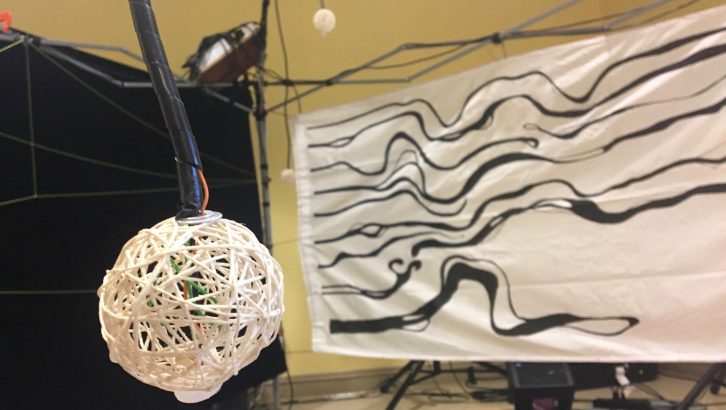music
From steel to silicon: musicians display sonic tech
MINT brings together tech-savvy musicians and their creations
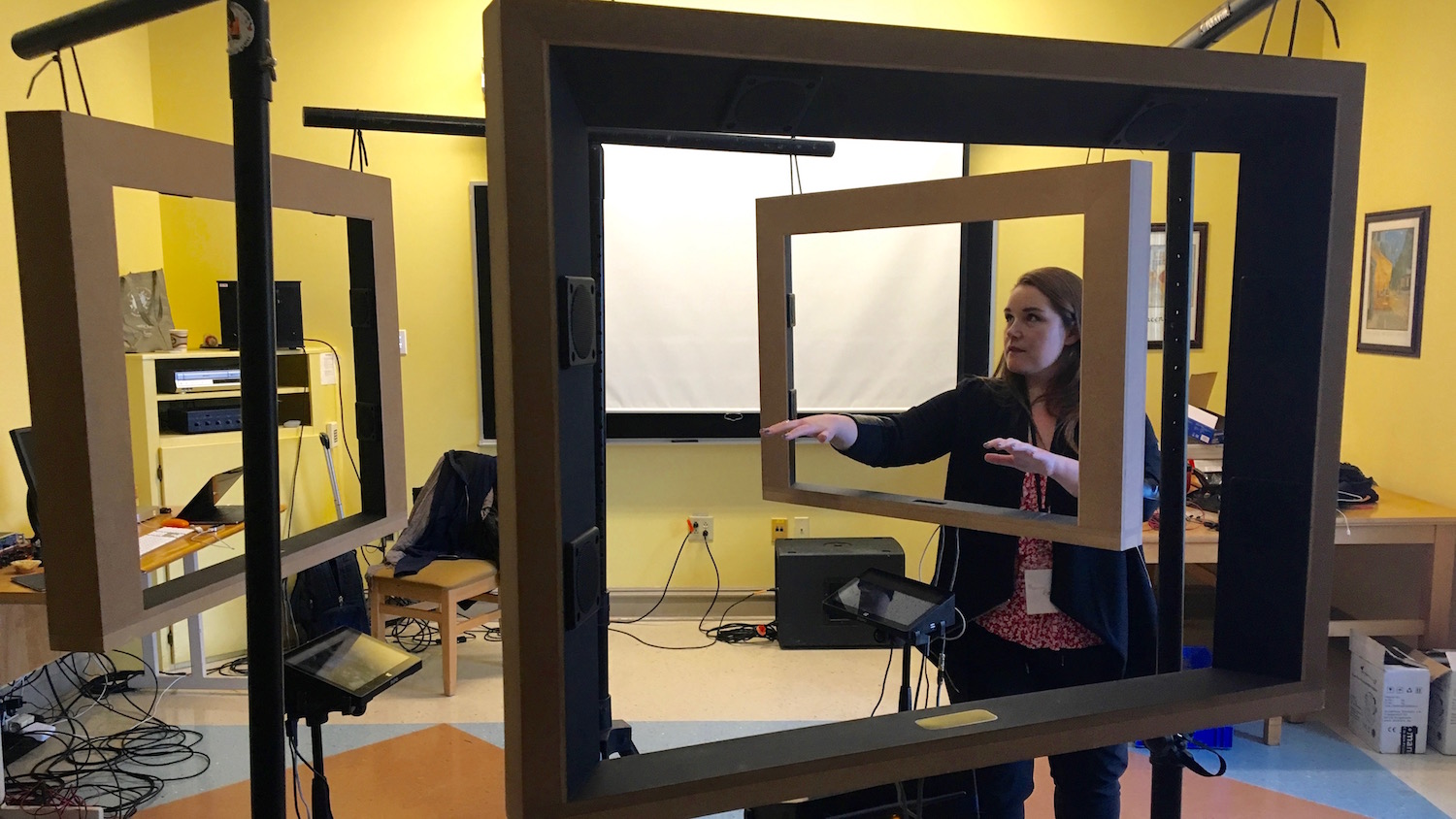
caption
Singer Maureen Batt plays the Apertures installation at the MINT conference. "You don't see any of this around," she says of the tech on display.Janice Jackson is introducing musicians to new tech and the public to new music this weekend.
“We listen to music every day on the radio and online, and I think a lot of people have very specific preconceived ideas about what music is,” said Jackson, local vocalist and organizer of the Music in New Technologies conference.
“What these guys are doing with new tech is challenging our perception of what music is.”
The conference, known as the MINT, runs Friday to Sunday at the University of King’s College in Halifax. It features live demonstrations, lectures and interactive exhibits that showcase cutting-edge experimental music created with various forms of technology.
The conference has three themes: the voice in new technologies, improvisation and technology and new innovations in musical expression.
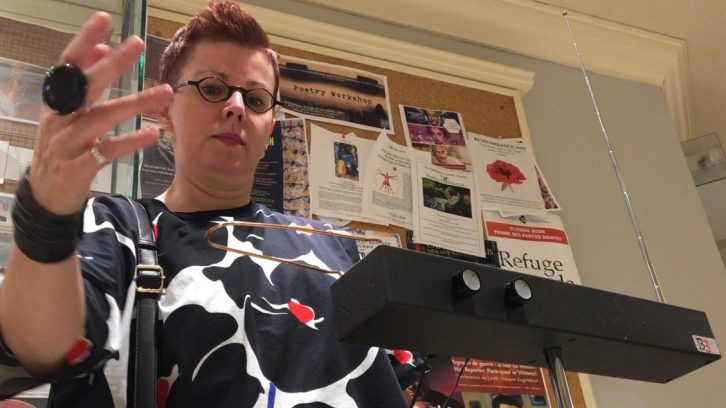
caption
Singer Janice Jackson plays the theremin during a break Friday. She organized MINT to show how tech can be used to make music.“It will open your eyes and your ears and all of your senses and your intellect, and I think it will give you a greater appreciation for how people are accessing and using and developing technology in music in any form. So I just think it will give people a much greater appreciation of what is happening right now in music in general,” she said by phone Thursday.
A window into the future
The conference features an exhibit from French musician Mathieu Chamagne called Apertures. It’s an apparatus of empty picture frames that make sounds when users put their hands through them. He said there are invisible “sonic objects” inside the frames users play by moving their hands.
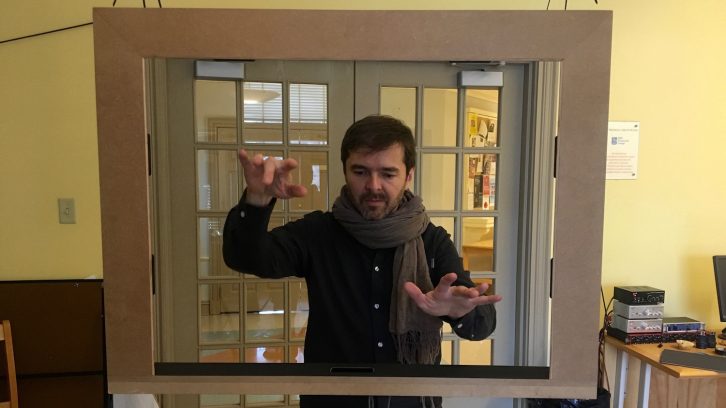
caption
Mathieu Chamagne plays his Aperture project. “What will happen if we just touch the sound and play with it without any interface in between?”Chamagne was inspired by the theremin, the world’s first electronic instrument created a century ago.
“You just play it without touching the instrument. For me, that’s something really brilliant,” he said.
He is also interested in the idea of making music without instruments and thinks tech is the ticket.
“People can play this instrument really freely without any user manual. It’s a gesture-based instrument,” he said. “I try to explore any kind of sonic materials.”
Low tech meets high tech
John Little, a blacksmith, was invited by Jackson to show an example of low-tech music with something he calls a Portuguese Manowar. Made from various scrap metals, it is one of many instruments he has made in his East Dover smithy.
“I like to call them sonic contraptions. They’re sort of weird little quixotic things,” he said.
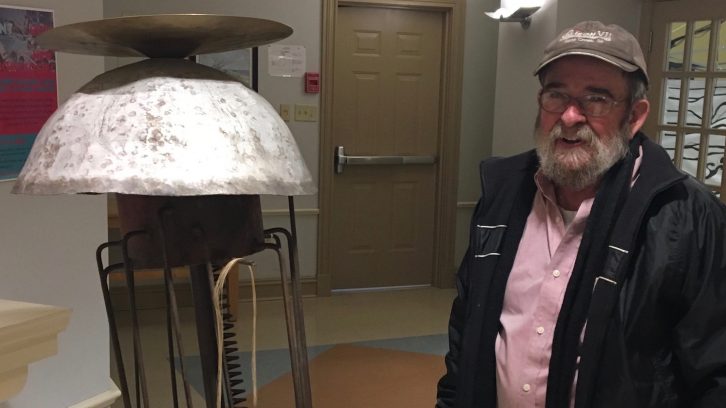
caption
John Little stands next to his sonic contraption he calls a Portuguese Manowar. He says it’s an example of a low-tech instrument.Little has been making instruments out of scrap metal for over 30 years, and said things have changed in ways he couldn’t have imagined.
“I just am stunned. I am at the exact opposite end of the technological spectrum from these people, and when I see what’s going on here, it just boggles the mind,” he said. “Mathieu’s thing with the Apertures, oh man … it’s the only time when I wish I could be young again … otherwise, I’m perfectly happy.”
Two days left
Recognizing that experimental and electronic music can be challenging, Jackson’s advice is “to listen to it as if you were a child who has no expectations of what music is.”
“Instead of going in with an idea of what you think music is and how it should sound, approach it from a how do I respond to this in this moment?” she said.
Little agreed, saying the success of some musicians depends on their audience.
“Not everything is a success,” he said. “There are failures out there, but 99 per cent of them if you just give them a chance, it just opens your eyes. I think that’s the point.”
